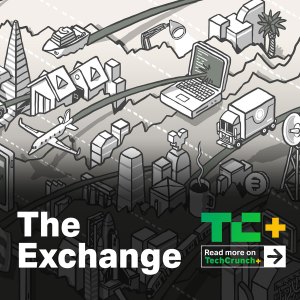In every startup cycle, there are attempts to get consumers goods faster than ever before, the hope being that technology has improved to the point that such deliveries are financially possible. Infamous dot-com-era flameouts are now ancient history, but they do indicate just how long founders and their backing investors have been working on the concept.
The dream of super-quick consumer deliveries never went away. Amid Uber’s ascent, a number of startups tried to build companies focused around fast food deliveries, leveraging pre-cooked food and a supply of drivers in urban areas to deliver the eats. Sadly, SpoonRocket and Sprig failed to survive.
The Exchange explores startups, markets and money. Read it every morning on Extra Crunch or get The Exchange newsletter every Saturday.
Instacart was a big deal, with a goal of one-hour grocery delivery, a model that it has expanded to include next-day delivery and the like. Some major platforms are tinkering with sub-hour deliveries, absorbing costs to work on the idea of even speedier consumer service.
Startups have also been hammering away on the idea in the last few years, leaning on so-called dark stores — mini warehouses, more or less — to provide a local supply of goods that can be whisked to consumers’ doors in record time. GoPuff has raised a tectonic amount of capital, for example, as have a host of other startups around the world. The model, called quick commerce — q-commerce for short — attracted billions of dollars in funding in recent years.
 And as in previous cycles, it’s falling apart. This is not to say that every company in the q-commerce market today will fail; GoPuff has major backers, and despite some issues, it may pull off its model. But we’re seeing, once again, startups that raised huge sums of money to build super-rapid consumer delivery models lay off staff, attempt to merge, and otherwise stay alive after they consumed mountains of cash.
And as in previous cycles, it’s falling apart. This is not to say that every company in the q-commerce market today will fail; GoPuff has major backers, and despite some issues, it may pull off its model. But we’re seeing, once again, startups that raised huge sums of money to build super-rapid consumer delivery models lay off staff, attempt to merge, and otherwise stay alive after they consumed mountains of cash.
Who could have seen this coming?
Fast is expensive, slow is cheap
It is not hard to see why q-commerce caught the attention of both founders and investors. Uber Eats helped keep its parent company’s gross merchandise volume afloat during COVID, when demand for ride-hailing services tanked. And DoorDash grew like a proverbial weed over the last few years, leading to a mega-IPO and share price that crested at $257 in late 2021.
Consumers wanted deliveries, and they wanted them quickly, and companies that were in that game were doing well. So why not try the same model, but even faster? Wouldn’t consumers love that even more? So long as you had a model in mind that could make the math shake out at least on paper — thank you, dark stores! — it was off to the races.
